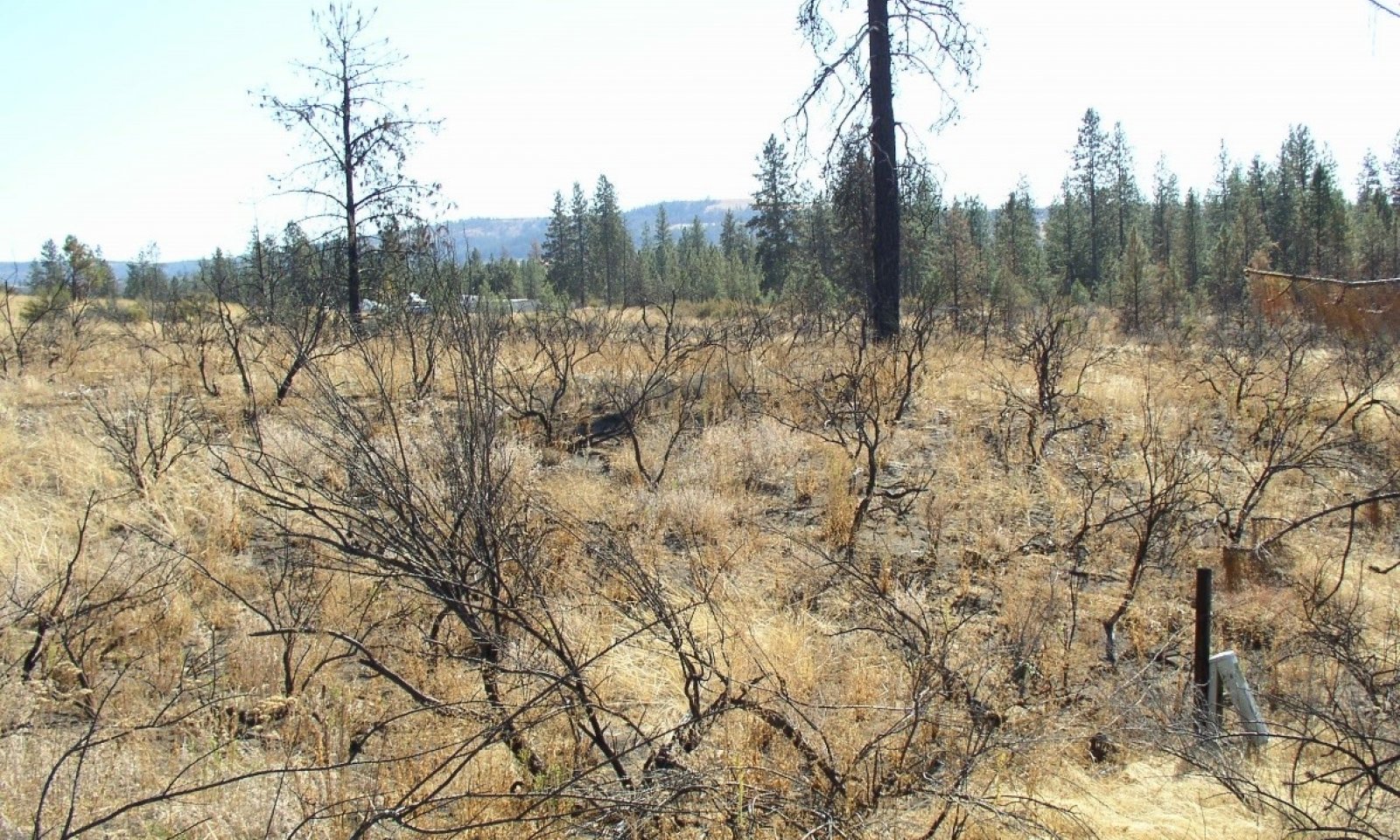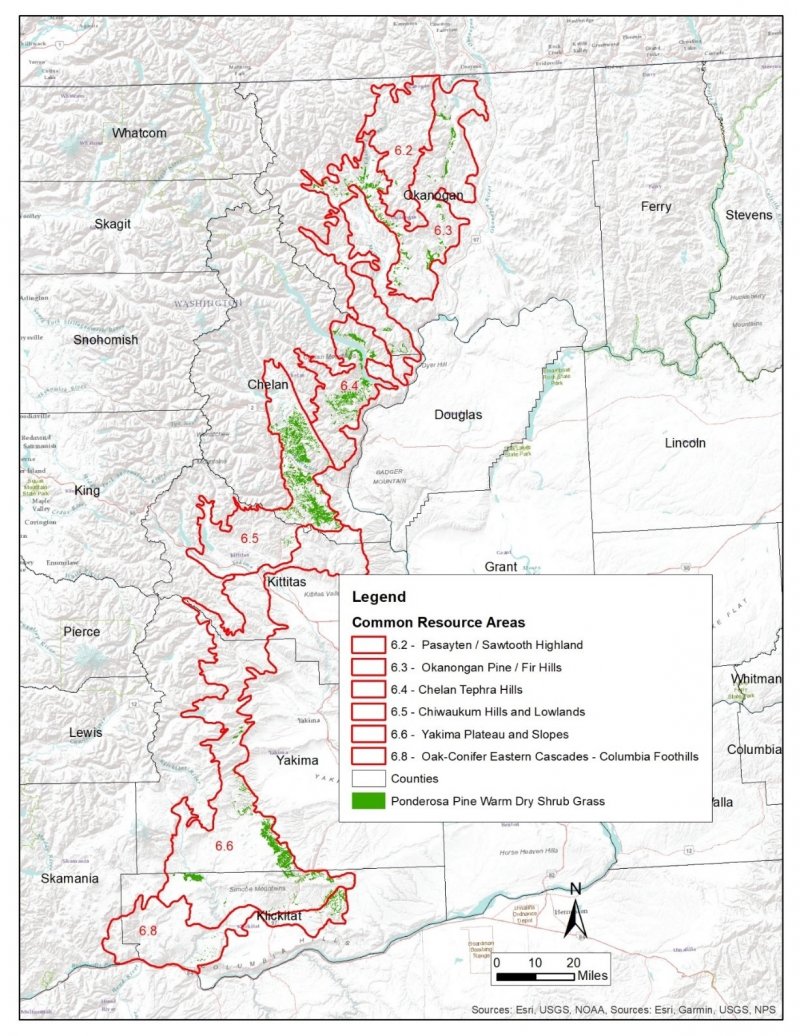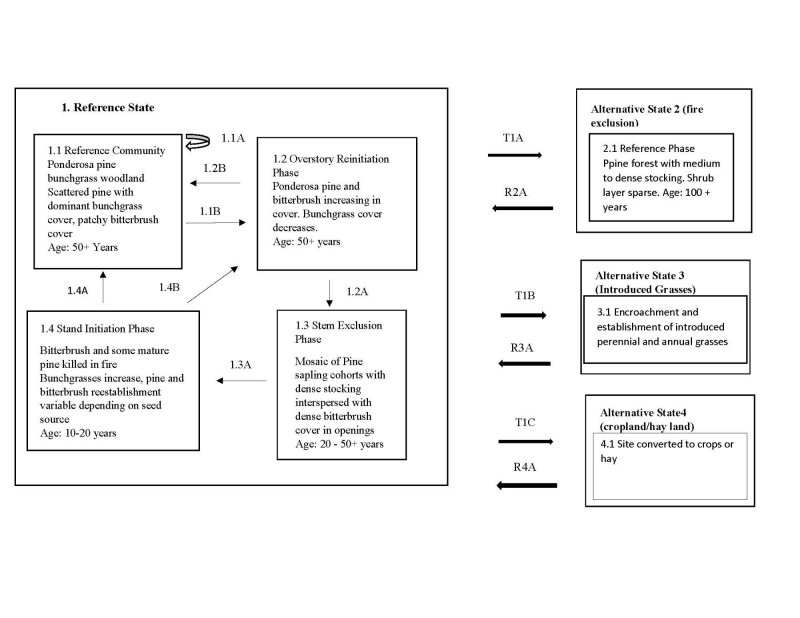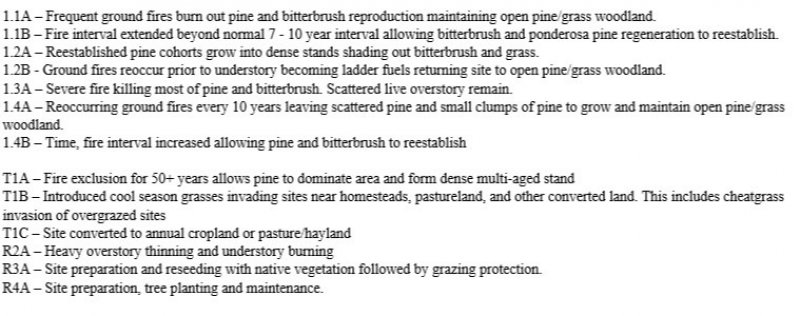

Natural Resources
Conservation Service
Ecological site F006XB004WA
Mesic Xeric Foothills and Mountain Slopes (Ponderosa Pine Hot Dry Shrub Grass)
Last updated: 4/01/2025
Accessed: 04/24/2025
General information
Provisional. A provisional ecological site description has undergone quality control and quality assurance review. It contains a working state and transition model and enough information to identify the ecological site.
MLRA notes
Major Land Resource Area (MLRA): 006X–Cascade Mountains, Eastern Slope
Major Land Resource Area (MLRA): 006X–Cascade Mountains, Eastern Slope.
Stretching from northern Washington to southern Oregon, MLRA 6 encompasses the mountain slopes, foothills, elevated plateaus and valleys on the eastern slopes of the Cascade mountains. This MLRA is a transitional area between the Cascade Mountains to the west and the lower lying Columbia Basalt Plateau to the east. Situated in the rain shadow of the Cascade Crest, this MLRA receives less precipitation than portions of the cascades further west and greater precipitation than the basalt plateaus to the east. Geologically, the majority of the MLRA is dominated by Miocene volcanic rocks, while the northern portion is dominated by Pre-Cretaceous metamorphic rocks and the southern portion is blanketed with a thick mantle of ash and pumice from Mount Mazama. The soils in the MLRA dominantly have a mesic, frigid, or cryic soil temperature regime, a xeric soil moisture regime, and mixed or glassy mineralogy. They generally are moderately deep to very deep, well drained, and loamy or ashy. Biologically, the MLRA is dominated by coniferous forest, large expanses of which are dominated by ponderosa pine, Douglas-fir or lodgepole pine. Areas experiencing cooler and moister conditions include grand fir, white fir, and western larch while the highest elevations include pacific silver fir, subalpine fir and whitebark pine. Economically, timber harvest and recreation are important land uses in these forests. Historically, many of these forests would have experienced relatively frequent, low and mixed severity fire favoring the development of mature forests dominated by ponderosa pine or Douglas-fir. In the southern pumice plateau forests, less frequent, higher severity fire was common and promoted the growth of large expanses of lodgepole pine forests.
LRU notes
Common Resource Area (CRA) 6.5 - Chiwaukum Hills and Lowlands
This LRU occurs predominantly on slopes of hills and mountains. The soils are dominantly in the Mollisols taxonomic order with less extensive areas of Andisols, Alfisols and Inceptisols . Soil parent materials are dominantly colluvium and residuum from igneous, sedimentary, and metamorphic rock, glacial outwash, and glacial till, with a mantle or mixture of volcanic ash and loess in the upper part. Taxonomic soil climate is primarily a mesic temperature regime and xeric moisture regime with average annual precipitation of about 19 inches.
Other LRU'S where the site occurs:
CRA 6.3 - Okanogan Pine / Fir Hills
CRA 6.4 - Chelan Tephra Hills
CRA 6.6 - Yakima Plateau and Slopes
CRA 6.8 - Oak-Conifer Eastern Cascades - Columbia Foothills
Classification relationships
CPS241 - ponderosa pine/bitterbrush/ bluebunch wheatgrass (PIPO/PUTR/PSSP) (WEN)
Ecological site concept
This ecological site can be highly variable depending on fire occurrence and severity, and seed source of shrubs and pine. It includes two plant associations: Ponderosa pine/bitterbrush/bluebunch wheatgrass and Ponderosa pine/bitterbrush. Pine savannahs are the transition from forest to range and are considered part of the range ecological site. For this ecological site Ponderosa pine and bitterbrush are the main cover species with Idaho fescue and bluebunch wheatgrass inversely proportionate to bitterbrush depending on fire disturbance. Soils will vary from sandy to loamy.
Associated sites
| F006XA007WA |
Warm Frigid Xeric Mountain Slopes (Douglas-fir Warm Dry Shrub/Herb) On northerly aspects. |
|---|---|
| F006XB001WA |
Frigid Xeric Mountain Slopes (Douglas-fir Moderately Dry Shrub/Herb) Little moister. |
Similar sites
| F006XA002WA |
Mesic Xeric Hill Slopes and Terraces (Ponderosa Pine Hot Dry Grass) This site lacks bitterbrush in the understory. |
|---|
Table 1. Dominant plant species
| Tree |
(1) Pinus ponderosa |
|---|---|
| Shrub |
(1) Purshia tridentata |
| Herbaceous |
(1) Pseudoroegneria spicata |
Click on box and path labels to scroll to the respective text.
Ecosystem states
| T1A | - | Fire prevention, stand competition mortality, and decreased forest health. |
|---|---|---|
| T1B | - | Introduced non-native species |
| T1C | - | Land conversion |
| R2A | - | Heavy overstory thinning followed by reoccurring understory prescribed burning |
| R3A | - | native plant reseeding with grazing protection |
| R4A | - | tree planting |
State 1 submodel, plant communities
| 1.1B | - | extended fire interval |
|---|---|---|
| 1.2B | - | Ground fires reoccur |
| 1.2A | - | Reestablished pine regeneration |
| 1.3A | - | Severe fire |
| 1.4A | - | Time |
| 1.4B | - | Time and fire interval increase |



